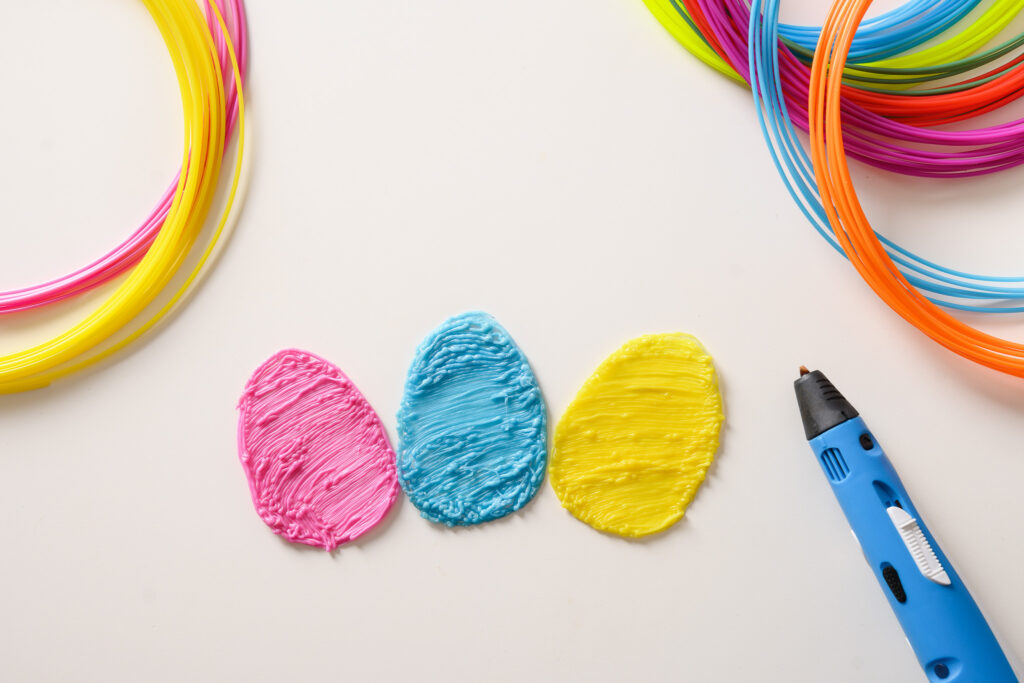3D Pen Creation
Unleash Your Creativity with 3D Printing Pen Filament
Introduction
The world of 3D printing has evolved dramatically in recent years, giving rise to a variety of exciting tools and technologies. Among these, 3D printing pens have gained significant popularity for their accessibility and versatility. These pens allow users to create three-dimensional objects by extruding heated filament material through a nozzle. In this blog, we’ll delve into the fascinating world of 3D printing pen filament, exploring the different types, their properties, and how they can help you bring your creative ideas to life.
Types of 3D Printing Pen Filament
PLA (Polylactic Acid)
Polylactic acid, or PLA, is one of the most popular filament choices for 3D printing pens. PLA is derived from renewable resources like cornstarch or sugarcane, making it an eco-friendly option. It is known for its ease of use, low melting point, and minimal warping, which makes it ideal for beginners. PLA comes in a wide array of vibrant colors, allowing for creative and visually appealing projects.
Key Features:
Biodegradable and environmentally friendly
Low melting point (around 180-220°C)
Minimal fumes and odor during printing
Excellent for artistic and decorative projects
ABS (Acrylonitrile Butadiene Styrene)
ABS filament is valued for its strength, durability, and resistance to high temperatures, making it suitable for functional and mechanical applications. It requires a higher extrusion temperature and proper ventilation due to the fumes it emits during printing. ABS prints can be post-processed with acetone vapor for a smooth, glossy finish.
Key Features:
High durability and impact resistance
Requires higher extrusion temperature (around 210-250°C)
Suitable for functional prototypes and mechanical parts
Requires adequate ventilation during printing
PETG (Polyethylene Terephthalate Glycol)
PETG filament combines the best of both PLA and ABS. It offers strength and durability similar to ABS while maintaining the ease of printing associated with PLA. PETG is known for its excellent layer adhesion and resistance to moisture, making it an excellent choice for outdoor or functional prints.
Key Features:
Strong and durable
Good layer adhesion
Resistant to moisture and UV radiation
Easier to print than ABS (extrusion temperature around 230-250°C)
Specialty Filaments
In addition to the above, there are various specialty filaments available for 3D printing pens. These include:
a. Wood-Filled Filament: Contains wood fibers and PLA, giving printed objects a wooden appearance and texture.
b. Metal-Filled Filament: Infused with metallic particles, creating a shiny, metal-like finish.
c. Flexible Filament: Made from materials like TPU (Thermoplastic Polyurethane), it allows for the creation of flexible and elastic objects.
Choosing the Right Filament
The choice of filament largely depends on the specific requirements of your project. If you’re a beginner or working on decorative items, PLA is an excellent starting point due to its ease of use and wide color variety. For functional parts, consider ABS or PETG for their durability. Specialized filaments offer unique textures and properties, making them ideal for artistic and experimental projects.
Conclusion
3D printing pen filament is a critical component that can significantly impact the outcome of your creations. Understanding the properties and characteristics of different filament types empowers you to choose the right material for your projects. Whether you’re designing functional parts or crafting artistic pieces, the right filament will help you turn your imagination into reality, layer by layer. Embrace the endless possibilities of 3D printing pen filament and embark on a journey of creative exploration.


